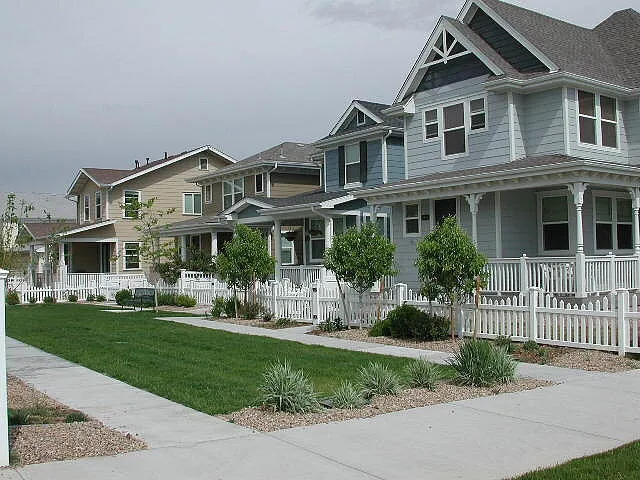If you own a home, condo, or townhouse in Colorado that is managed by a Homeowners’ Association (HOA), understanding how your HOA addresses construction defects is crucial. Construction defects can significantly impact the safety, usability, and value of properties, making prompt and effective resolution essential. This guide explains the role of HOAs in managing construction defects, how the process typically unfolds, and when it’s advisable to involve a Colorado construction defect lawyer.
The Role of HOAs in Addressing Construction Defects
In Colorado, HOAs play a crucial role in managing community properties, including addressing construction defects. Typically, HOAs are responsible for common areas, exterior maintenance, and structural components shared by multiple homeowners. When defects arise in these shared areas, it’s usually the HOA’s responsibility to investigate and pursue remedies on behalf of homeowners.
Colorado laws provide specific guidelines about the HOA’s duties to address defects, which include hiring experts to investigate complaints, informing members about issues and remediation plans, and pursuing legal action against developers or contractors if necessary.
Identifying Construction Defects
Construction defects can range from minor issues to significant structural problems. Common defects include:
- Faulty plumbing or electrical installations
- Roof leaks and inadequate waterproofing
- Cracks in foundations or walls
- Poor drainage causing water accumulation
- Defective windows and doors
- Substandard construction materials
Typically, HOAs become aware of these defects through homeowner complaints, routine maintenance inspections, or expert evaluations. Once identified, the HOA must document the defects thoroughly, often hiring qualified professionals such as engineers or construction specialists to assess the extent and implications of the issues.
HOA Responsibilities and Notifications
Colorado statutes require HOAs to act promptly upon identification of a construction defect. HOAs must notify homeowners promptly about any identified defects, the nature of the problems, potential risks, and intended actions. Transparency during this phase is crucial as it maintains trust between the HOA and homeowners.
The HOA is responsible for organizing expert inspections, coordinating communication among affected homeowners, and providing clear documentation of any findings and actions taken. Proper documentation helps support any legal claims and demonstrates due diligence.
The Pre-litigation Process in Colorado
Colorado law encourages HOAs to first seek solutions outside of court through the Notice of Claim process. This begins by formally notifying the responsible builder or developer about the defects and offering them an opportunity to inspect, repair, or settle the matter amicably.
During this stage, the builder or contractor has a legally defined period (typically 30 to 60 days) to inspect the alleged defects and propose a remedy. The HOA must then evaluate this response and determine whether it sufficiently addresses the community’s concerns.
Involving a Colorado Construction Defect Lawyer
If negotiations or initial repair efforts fail, or if the builder is unresponsive or denies responsibility, it’s prudent for the HOA to consult a qualified Colorado construction defect lawyer. Experienced attorneys can advise on the strength of the case, manage the complexity of litigation, and represent the HOA effectively to maximize chances for a favorable outcome.
A skilled lawyer helps ensure that the HOA complies with all procedural requirements under Colorado law, from properly documenting the defects and communications to filing timely legal actions. Importantly, involving an attorney early can expedite resolution and improve negotiation outcomes.
Legal Remedies for HOAs in Colorado
Should informal remedies fail, litigation might become necessary. Under Colorado law, HOAs can seek various remedies, including:
- Repair costs: Covering expenses to fully address and rectify construction defects.
- Diminished property value: Compensation for the reduction in market value due to defects.
- Legal fees and costs: Reimbursement for attorney fees, expert witness fees, and court costs.
Colorado courts typically encourage parties to resolve disputes through mediation or arbitration before proceeding to trial. Alternative Dispute Resolution (ADR) processes are often quicker and less costly, offering effective outcomes without prolonged court battles.
Important Timeframes to Remember
Colorado imposes strict statutes of limitations and repose for construction defect claims. Typically, homeowners and HOAs must bring claims within two years of discovering the defect. Additionally, Colorado has a six-year statute of repose, meaning claims cannot be filed more than six years after the completion of the construction, regardless of when defects are discovered.
Missing these deadlines can permanently bar recovery, underscoring the importance of prompt action and consulting a Colorado construction defect lawyer as soon as defects become apparent.
Preventative Measures for HOAs
Proactive measures by HOAs can minimize risks associated with construction defects:
- Regular inspections: Routine professional inspections help identify issues early before they escalate.
- Clear records: Maintaining detailed records of all maintenance activities, inspections, and homeowner communications can significantly strengthen potential claims.
- Effective communication: Timely and transparent communication with homeowners regarding potential issues and resolutions builds trust and cooperation.
By adhering to these practices, HOAs in Colorado can address issues effectively, minimize damage, and safeguard community value.
When to Seek Legal Advice
If your HOA faces persistent or substantial construction defects, engaging a Colorado construction defect lawyer can provide essential guidance. Legal representation helps navigate complex statutory requirements, negotiate effectively with responsible parties, and pursue litigation when necessary to protect homeowners’ rights and property values.
Ultimately, an HOA’s primary goal in handling construction defects is ensuring the long-term safety, value, and quality of life for homeowners within the community. Having clear procedures in place and accessing skilled legal counsel ensures the HOA fulfills this role effectively.



































